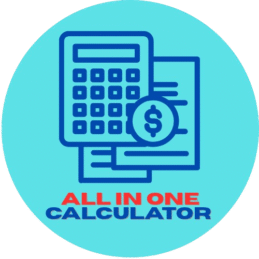FD Calculator
How to Use This Calculator
- Enter Currency: Select your desired currency (INR, USD, etc.) for investment.
- Enter Principal Amount: Input the amount you want to invest as fixed deposit.
- Enter Interest Rate: Provide the annual interest rate offered by the bank.
- Choose Compounding Frequency: Select Monthly, Half-Yearly, or Yearly compounding.
- Enter Time Period: Duration for which the FD will be held (in years or months).
- Click Calculate: View maturity amount, interest earned, and detailed results in chart & table format.
Why Use This Calculator?
- ✔ Estimate Returns: Know exactly how much you’ll earn from your FD.
- ✔ Compare Banks: Evaluate different interest rates and compounding options.
- ✔ Financial Planning: Use the maturity value for better budget forecasting.
- ✔ Visual Reports: Get detailed graphs and tables for easy understanding.
Understanding FD Calculator
FD (Fixed Deposit) is a financial instrument where you deposit a lump sum amount for a fixed tenure at a fixed interest rate. An FD calculator helps you estimate the maturity amount you’ll receive at the end of the term.
Key Elements of FD
- Principal: The amount you invest initially.
- Interest Rate: The annual rate at which your money grows.
- Tenure: The duration of the FD (in months or years).
- Interest Type: Simple or Compound (Quarterly/Annually).
How FD Interest is Calculated
FDs can have either simple or compound interest. Compound interest yields more returns over time.
Maturity Amount = P × (1 + r/n)nt
where, P = Principal, r = annual interest rate, n = compounding frequency, t = tenure in years
where, P = Principal, r = annual interest rate, n = compounding frequency, t = tenure in years
Tips to Maximize FD Returns
- Compare Rates: Check FD interest rates from different banks or NBFCs before investing.
- Choose Right Tenure: Longer tenures often yield better returns.
- Compounding Option: Go for compound interest if available.
- Split Deposits: For liquidity and tax benefits, consider splitting into multiple FDs.
FD vs Other Saving Instruments
| Instrument | Pros | Cons |
|---|---|---|
| FD | Safe, fixed returns, easy to understand | Returns lower than market-based instruments |
| Mutual Funds | Potentially higher returns, diversification | Market risks, no fixed return |
| PPF | Tax-free interest, long-term savings | Lock-in period, limited liquidity |


